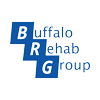3 Exercises to Relieve De Quervain’s Syndrome
Have you ever felt a sharp pain at the base of your thumb after lifting your baby, gardening, or even just typing at your desk?
If so, you might be experiencing De Quervain’s Syndrome, a common condition that can make everyday activities painful and challenging.
Keep reading to learn more about the condition and how to relieve it.
What is De Quervain’s Syndrome?
De Quervain’s Tenosynovitis occurs when the tendons around the base of the thumb become irritated or constricted.
This condition is often caused by repetitive hand or wrist movements, such as lifting a baby, gardening, playing sports, or typing. It can be particularly common among new parents, athletes, and those with occupations that require repetitive hand use.
Signs and Symptoms of De Quervain’s
De Quervain’s can cause pain near the base of your thumb, swelling in the same area, and difficulty moving your thumb and wrist during activities that involve grasping or pinching. You might also experience a sticking or stop-and-go sensation in your thumb when trying to move it.
How Occupational Therapy Can Help
Our occupational therapists are skilled in providing effective treatments for De Quervain’s tenosynovitis. By incorporating specific exercises into your routine, you can alleviate pain and improve function. Here are some recommended exercises:
Finger Opposition:
- How to Do It: Touch the tip of your thumb to the tip of each finger, one at a time. For more of a challenge, slide your thumb down each finger after touching the tip.
- Reps: Complete two sets of 10 reps each.
Finger Extensions:
- How to Do It: Using a rubber band or hair tie, pinch your fingers together and place it around them. Extend your fingers upwards.
- Reps: Complete two sets of 10 reps each.
Wrist Flexion and Extension:
- How to Do It: Hold your arm out in front of you with your palm facing down. Flex your wrist so your fingers point towards the floor, then extend your wrist so your fingers point towards the ceiling.
- Reps: Complete two sets of 10 reps each.
These exercises help to stretch and strengthen the muscles and tendons around your thumb and wrist, reducing inflammation and improving flexibility and strength. Regular practice can help manage the symptoms of De Quervain’s and prevent the condition from worsening.
Are you struggling with wrist or hand pain?
Our team of Occupational Therapists can provide you with a personalized plan to feel and move your best.
Treatment is covered by insurance, no referral is needed to start, and with flexible appointments available, you can find a time that works with your schedule.
Click the button below to get started.
